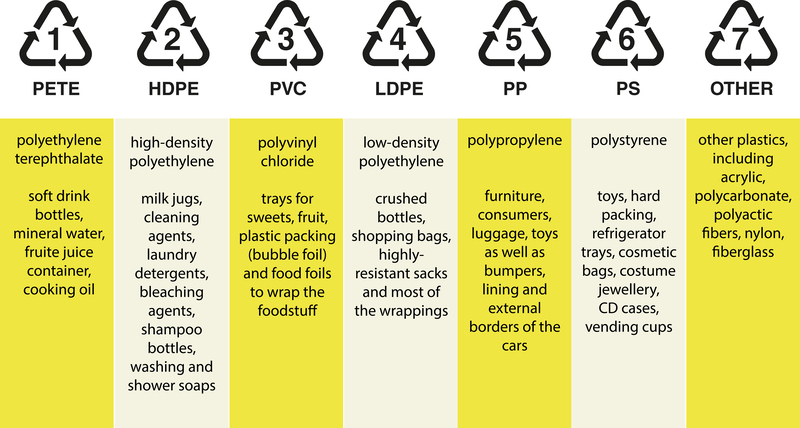Reduce Environmental Impact by Properly Handling PPE Waste
The rise in the use of personal protective equipment (PPE)--such as gloves, masks, gowns, and face shields--has been vital in protecting public health, especially in medical settings and during global events like the COVID-19 pandemic. However, poor disposal and mismanagement of PPE waste are causing significant environmental consequences. In this comprehensive guide, we explore how to reduce environmental impact by properly handling PPE waste, outlining best practices, current challenges, and actionable solutions to create a cleaner, healthier planet.

Understanding the Environmental Consequences of PPE Waste
PPE has saved millions of lives, but most disposable PPE products are made from plastics like polypropylene, which are not biodegradable. Improperly discarded PPE often ends up in landfills, oceans, and urban environments, posing serious threats to animals, ecosystems, and even human health.
The Scope of the PPE Waste Issue
- Global PPE Waste Generation: According to The World Health Organization, approximately 129 billion face masks and 65 billion gloves were used monthly during the height of the COVID-19 pandemic.
- Non-Biodegradable Materials: Most disposable PPE contains synthetic polymers that take centuries to degrade.
- Environmental Pollution: PPE litter, especially masks and gloves, is increasingly found on streets, waterways, and coastlines, contributing to microplastic pollution and harming wildlife.
Ecological Impact of Improper PPE Disposal
- Threats to Marine Life: Sea creatures can mistake PPE waste for food or become entangled, often resulting in injury or death.
- Microplastics: As PPE breaks down, it releases microplastics, contaminating water and food supplies.
- Soil Contamination: Hazardous chemicals and plastics from PPE leach into soil, affecting plant growth and entering the food chain.
- Greenhouse Gas Emissions: Incinerating plastic-based PPE in uncontrolled conditions can release harmful emissions, including dioxins and furans.
Best Practices to Properly Handle PPE Waste
To minimize the environmental impact of PPE waste, it's essential to adopt responsible consumption, disposal, and recycling measures. Below are key recommendations for governments, organizations, and individuals.
1. Opt for Reusable PPE When Possible
- Cloth Masks: For the general public, washable fabric masks can be as effective as disposables for most situations, reducing dependency on single-use products.
- Reusable Face Shields and Gowns: In non-medical settings, choose PPE made from durable, washable materials.
- Proper Sanitization: Ensure reusable PPE is cleaned and disinfected as per health guidelines to maintain safety and effectiveness.
2. Educate Stakeholders on PPE Waste Disposal
- Clear Signage: Place instructions in public areas and workplaces to inform people how to dispose of used PPE correctly.
- Training Programs: Implement staff training on sustainable PPE usage and waste sorting, especially in healthcare and industrial sectors.
- Awareness Campaigns: Use social media, posters, and community outreach to highlight the environmental risks associated with improper PPE disposal.
3. Segregate PPE Waste from General Waste
- Use Designated Bins: Dispose of used masks, gloves, and other PPE in clearly labeled bins to prevent contamination of recyclable materials.
- Color-Coded Systems: Many countries recommend specific colors (such as red or yellow) for medical PPE waste to help with identification and safer handling.
- Double-Bagging: In infectious settings, double-bagging helps reduce contamination risks for waste handlers.
4. Promote Safe PPE Waste Collection and Disposal Methods
- Scheduled Collections: Work with local authorities to arrange regular collections of PPE waste from clinics, offices, and homes.
- Incineration in Controlled Facilities: Ensure hazardous or contaminated PPE is incinerated in specialist facilities that minimize toxic emissions.
- Landfill Management: Use secure, lined landfills to limit leaching of plastics and chemicals into soil and groundwater.
5. Encourage Recycling and Innovations in PPE Disposal
- PPE Recycling Programs: Some companies and local governments are piloting mask and glove recycling initiatives. Always check guidelines to see if PPE recycling is available in your area.
- Innovative Materials: Manufacturers are experimenting with biodegradable masks and gloves made from natural fibers and starch-based polymers.
- Energy Recovery: Converting PPE waste into energy through advanced processes like pyrolysis and gasification reduces landfill dependency.
Steps Individuals Can Take to Reduce PPE Waste Footprint
While large-scale changes require institutional participation, everyone can take simple steps to reduce the environmental impact of PPE waste in their daily lives.
Personal Actions for Proper PPE Waste Management
- Limit Use of Single-Use PPE: Only use disposable PPE when necessary. Choose reusable masks and face shields whenever suitable.
- Never Litter PPE: Always dispose of your used PPE in the appropriate bin. Carry a small disposal bag when out in public.
- Clean and Store Reusable PPE Properly: Ensure masks and shields are thoroughly washed and kept in clean containers between uses.
- Participate in Local Recycling Initiatives: If a PPE-specific recycling program exists, take advantage of it and encourage others to join.
- Educate Others: Share best practices with friends, colleagues, and family members to spread awareness of environmental responsibility.
PPE Waste in Healthcare and Industrial Sectors: Special Considerations
Hospitals, medical clinics, laboratories, and industrial facilities generate vast amounts of contaminated PPE waste. It's crucial these sectors lead by example in environmental stewardship.
Hospital and Clinical PPE Waste Management
- Adherence to Protocols: Medical waste must follow strict infection control and hazardous material guidelines from agencies like the CDC and WHO.
- Staff Training: Continuous education on the newest safe disposal techniques is essential to limit both infection and environmental risk.
- Segregation at Source: Ensuring all medical staff sort PPE waste in designated containers reduces the risk of environmental release.
Industrial & Commercial PPE Waste Solutions
- Waste Audits: Regularly review the types and amounts of PPE used and disposed of, seeking opportunities to replace disposables with reusables.
- Onsite Treatment: For hazardous materials, many companies invest in autoclaving or incineration systems to treat PPE waste safely.
- Supplier Collaboration: Partnering with environmentally conscious PPE suppliers can reduce waste at the source by favoring sustainable options.

The Path Forward: Innovations and Policy Developments
Efforts to reduce the environmental impact of PPE waste are gathering momentum worldwide. Researchers, businesses, and governments are developing solutions for a more sustainable future.
Biodegradable and Sustainable PPE Materials
- Plant-Based Masks & Gloves: Emerging products use bamboo, hemp, and other natural fibers to replace petroleum-based plastics.
- Starch-Based Polymers: Some companies are manufacturing PPE from compostable bioplastics derived from wheat or corn starch.
- Pilot Projects: Early trials show promise, but supply chains and cost need improvement for wide adoption.
Government Regulations and Guidelines
- Mandating Onsite Waste Treatment: Governments are requiring certain healthcare facilities to process medical PPE waste before landfill disposal.
- Incentives for Green Solutions: Tax breaks and grants are available in some regions to support PPE recycling and use of biodegradable alternatives.
- International Standards: The United Nations has launched initiatives to standardize PPE waste management globally.
Summary: A Shared Responsibility for Our Planet
The rapid increase in PPE production, use, and disposal presents urgent environmental challenges. To reduce environmental impact by properly handling PPE waste, it's imperative that governments, organizations, and individuals all commit to proper waste management, education, responsible consumption, and innovation.
- Switch to reusable or sustainable PPE wherever possible.
- Educate others about the harm caused by improper PPE disposal.
- Support recycling initiatives and forward-thinking policies that foster a circular economy for PPE products.
- Work together to develop and implement comprehensive waste management plans for PPE in homes, communities, hospitals, and workplaces.
By taking these steps today, we can protect our ecosystems, reduce pollution, and build a sustainable future--one piece of PPE at a time.
FAQs on PPE Waste and Environmental Impact
- Can I put masks and gloves in household recycling? No, most used PPE isn't accepted in standard recycling streams due to contamination risks and non-recyclable plastics. Always confirm local guidelines.
- Are biodegradable masks effective? Early tests show that many biodegradable mask prototypes meet filtration standards, but always verify efficacy before use in high-risk environments.
- What should I do if I see PPE litter in my community? Wear gloves, collect the waste, and dispose of it in a sealed bag in a landfill-designated bin. Encourage others not to litter and report disposal issues to your local authority.
Together, by properly disposing of PPE and supporting sustainable solutions, we can reduce our environmental impact and ensure a healthier world for generations to come.
